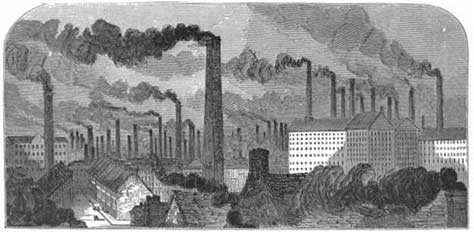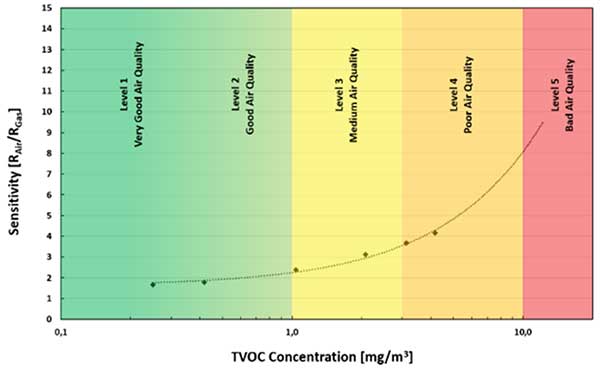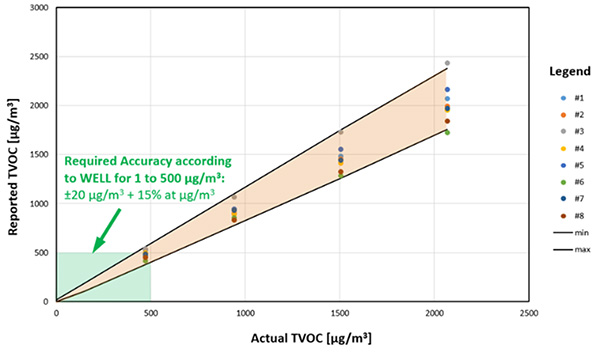
Renesas: indoor air quality - changing the future with smart sensor systems
Pollutants and air quality have a long history in civilization. In times of historical economic advances of man, we saw increased levels of pollutants. In the Roman days it was methane and smoke from homes and buildings and during the industrial revolution the smoke meant progress and prosperity. Where coal and steel cities existed, the problem was recognized in the 1500’s. It was not until the 1940’s where the correlation of outdoor pollutants and health became a concern in major cities. Outdoor air pollutants began to be measured and the study of how these impacted our health emerged in the 1970’s.
Today, we have definitions of outdoor pollutants such as Particulate Matter, Ozone & Nitrogen Dioxide. While we don’t have accurate systems in place in most areas to measure these pollutants locally, such as a street corner where buses may be idling, we do have generalized tools to alert people of health concerns.

Source: https://longstreet.typepad.com/thesciencebookstore/2011/12/jf-when-every-man-is-his-own-end-all-things-will-come-to-a-bad-end-coleridge-the-water-stands-here-and-there-in-deep.html
Ironically, for indoor air quality where we spend 90% of our time, there is limited agreement or quantification of acceptable levels of gasses. The current state of indoor air quality is reminiscent of the 1940’s where millions of people each year become sick or die due to their air quality. COVID has brought this awareness to many people that previously never considered the air in their homes or work buildings could have been making them sick.

A confluence of both necessity due to recent awareness and technology are quickly changing the way that we consider the air that we breath indoors. The missing piece of the equation is: What are acceptable indoor pollutant levels? Standards for indoor air quality have been limited to specific gasses such as Carbon Monoxide (CO), Carbon Dioxide (CO2) and Formaldehyde (CH2O). This is now changing. Environmental air quality consists of many gasses and particles that interact together. These include Volatile Organic Compounds (VOC’s) as well as above mentioned gasses that are carcinogenic or toxic and can kill quickly, slowly or make us sick.
Impacts of technology that has emerged over the past years include:
Material science

Renesas shifted from ceramic based substrates to measure gasses in the air to silicon based that significantly reduce size, cost, and improve reliability. Additional optical technologies have seen reduction in size and improved performance detecting both particulates as well as Carbon Dioxide.
Artificial Intelligence (AI)

The ability to use machine learning algorithms, such as neural networks to quantify targeted performance has enabled firmware configurable platforms providing rapid improvements in output, adherence to emerging standards and ultra-low power for battery powered applications. A Renesas team of engineers have released 10+ firmware AI configurations that use the same hardware and change the behavior of the sensors.
Economies of scale
Millions of low-cost sensors are being shipped driving down the cost of systems and enabling consumers to monitor their air quality without significant investments. Air quality sensors are now found in HVAC systems, Smoke Detectors, Conference Room equipment, Wireless Access points and Thermostats.
Standards for indoor air quality are emerging but still not universally accepted. In the United States the White House had a summit in October advocating standards and actions targeting air quality in public buildings https://www.whitehouse.gov/cleanindoorair/ . Several of the leading IAQ definitions:
Umweltbundesamt (UBA)

German Environmental Agency had two indoor air quality (IAQ) studies over the past 20 years that provided a definition of IAQ as well as how long an individual should be exposed to it. The latest study has 5 levels of VOC pollutants as well as other IAQ pollutants that require consideration. Renesas’ ZMOD4410 is calibrated to this standard using Ethanol as a gas proxy. As the scale of gasses is quite high, this is a very good air quality definition supporting home use where kitchens, bathrooms and cleaning products typically can significantly elevate poor air quality.
WELL Standard

Over the past several years, the WELL Building standard has seen strong adoption in commercial buildings, schools, and public indoor areas. The difference between the UBA standard and WELL standard is that the levels of acceptable gasses in extremely low for WELL. This is a definition that is measured in parts per billion (ppb) and is either acceptable or not acceptable. The goal of this definition and sensors is to trigger HVAC systems to always ensure safe air quality.
RESET standard
This is an IAQ standard that is seeing strong growth in Asia. Over the past years much attention was paid to particulates but not gasses, you could see this by people wearing masks when outside. Indoor gasses as well as particulates are now being targeted as air purifiers integrated into HVAC systems or standalone can remediate many of these gasses.
Air quality can be a tricky problem to solve as it is multi-dimensional. This means that Renesas Sensors can quantify gasses and then have their values change by the introduction of other gasses. This is the situation when oxidizing and reducing gases come together. In an indoor environment we quantify VOC levels (reducing gases). When a window is opened or air is drawn in from the outside, the introduction of Ozone which interacts with VOC’s. Ozone is an oxidizing gas and will reduce the level of VOC’s in a building. This may sound like a positive influence, but the concentration of ozone and how it impacts the baseline measurements of gas sensors is an issue. Changing the baseline of an IAQ sensor with an oxidizing gas will then bias the baseline used to report IAQ. We need to maintain a correct baseline of air quality to quantify levels of all pollutants and report to standards. In the illustration below, we can see a baseline shift due to Ozone entering a building as well as the sensors available to solve this problem. By using Renesas’ ZMOD4510, selective Ozone sensor with a ZMOD4410 VOC sensor calibrated to a standard and using a compensation engine, the baseline can be adjusted, and accurate reporting will continue with standards output. Also, elevated levels of Ozone can have a greater impact on health than the VOCs themselves, triggering respiratory issues. Thus, presenting a more complete picture of all pollutants is beneficial.

The solution requires several sensors and compensation engines to measure gasses found indoors as well as outdoors. When reporting to a very low-level ppb measurement, such as the WELL standard we also need relative humidity (RH) and temperature (T) sensors with compensation engines. Fortunately, this is a problem that we can solve with Renesas’ ZMOD4410, ZMOD4510 and HS4003 sensors.
Starting point for you design in start and prototyping should be
The Renesas Indoor Air Quality Sensor Platform Evaluation Kit with ZMOD4410-EVK or ZMOD4510-EVK or the US082-ZMOD4510EVZ board, which enables quick prototyping of the ZMOD4510 gas sensor module for outdoor air quality (OAQ) in a custom system design.

With low-cost sensors, AI and compensation engines the last piece of the puzzle is defining an acceptable air quality. Fortunately, there are groups that have provided studies with clear indoor air quality definitions as well as HVAC industry organizations pushing for agreed upon standards. Over the next several years we will have the ability quantify our air and have systems make decisions on our behalf. AI solutions will decide if outdoor air should be brought into the building based on the Outdoor Air Quality (OAQ) or recirculated using air purifiers that remove harmful gasses. Both neurological and cardiovascular diseases will see a sharp decrease because of measuring and remediating poor air quality. The technology, commercial viability and emerging definitions of standards will ensure that our environment is monitored, and we move on from the time in the 1940’s when we recognized a problem but had no options to solve it.
Digital Gas Sensor Platform (ZMOD)
Renesas’ Digital Gas Sensor ZMOD family provides a range of integrated digital sensor modules that provide best-inclass performance and reliability stability. In addition to being chemically and electrically calibrated, the platform’s flexible interface enables embedded AI and neural network trained software for configurable indoor, outdoor, and refrigeration air quality sensing solutions for sensing VOCs, ozone and NOx gases.






